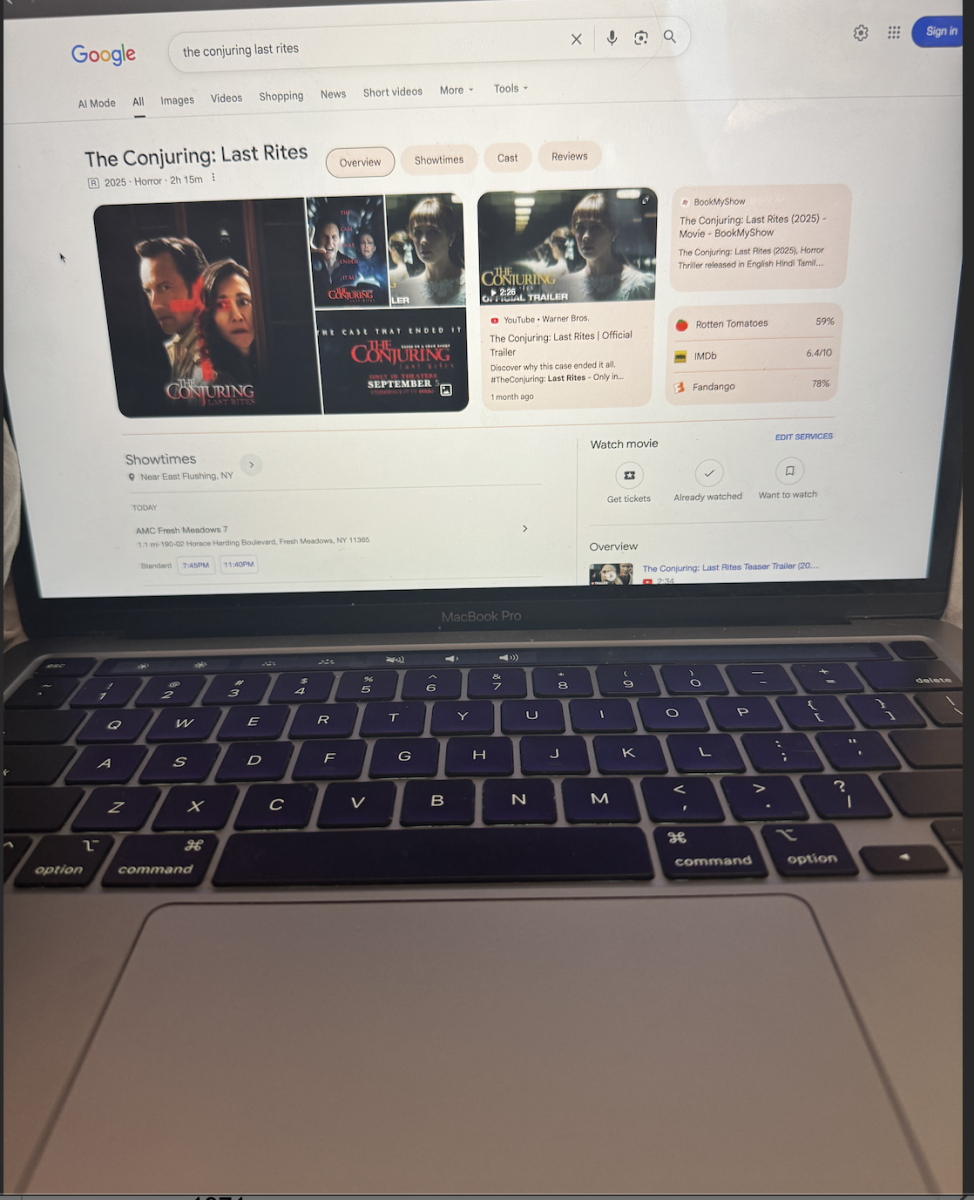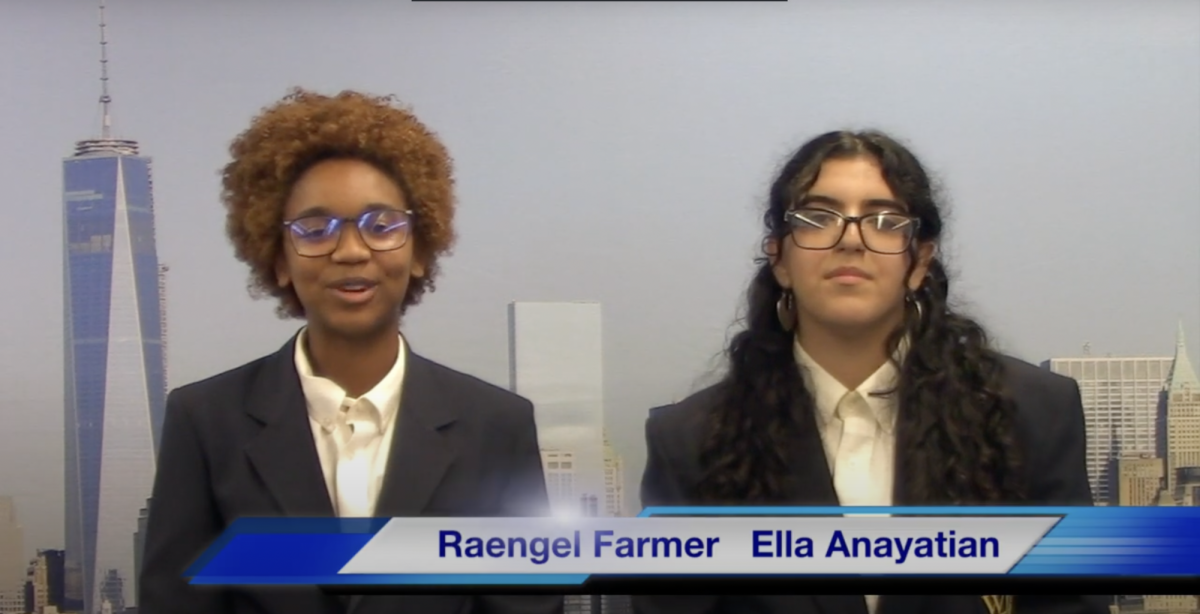by Esther Animalu, contributing reporter

Many students in the city take the MTA to get to school. Since taking public transportation is a daily routine, a lot of students are often late. There aren’t enough buses that stop in the locations students wait in to get to school on time. “ I dont think its really fair that the buses difficulty contributes to our detentions, three latenesses equal one absence which in turns bring down the attendance rate which makes us unattractive to colleges” senior Daria Lee said. Picture by Vanessa Ortega
A bus passes a bus stop filled with a few students. Then, a student observes the bus stopping at a the next bus stop from a distant view. Suddenly a switch begins to flick, and they start to dash hastily towards the bus, increasing their speed as the line of people entering that bus begins to decrease rapidly. The students start to lose their breath as their heart rate begins to escalate.
Abruptly, their minds have zeroed in on only one primary focus, to get on that bus! The pivotal moment arises when the students finally reach the bus stop with bated breath. Unwittingly, the MTA bus driver begins to drive away. Flustered and furious, the students go unnoticed. This is often the scenic case for numerous students of all grades, unjustly triggering them to get to school late.
An abundant amount of students take buses, trains or both, to school and home on a daily basis. As a result, metro cards are often distributed to a large majority of students. This causes the MTA buses and trains to be the initial means of transportation for most travelling students.
Therefore, when a bus arrives late or passes multiple stops, it initiates a chain reaction with the bus scheduled, and the timing of the other buses that were zoned to arrive at the stop becomes discombobulated. Which in turn, makes students late to school. In a world where time is always of the essence, this becomes a major concern.
“If a student arrives late to school, they’ll need to show the faculty a MTA verification that the bus or train came late. Or they can record or take a picture of multiple buses passing their bus stop. We can’t just simply take their word for it. My expectation for all students is that they consistently arrive to school on time.” principal Mrs. Schneider said.
As stated in the The New York Times, “the authority said it considered any train that reached its terminal destination “no more than five minutes late” to be on time, suggesting that any smaller holdups might go unrecorded. A spokesman added that the agency could not recall receiving a request to confirm a delay of less than five minutes.”
However, the rate of student punctuality could still be hindered by a five minute difference. Also, with the five minute mark gaps, trains aren’t able to get ridiculed or corrected in order to make their arrival more prompt.
“I get very frustrated when I get detention all because of a late bus. Then the school blames me for being late. It’s not like I had an option,” freshman Autumn Legunas said.
Furthermore The Strategy Center stated that, “for students, crowded and late buses mean lost work, and tremendous psychological stress. Late buses have negative impacts on all 400,000 daily bus riders. For many women, crowded and late buses lead to sexual harassment on the bus and long waits in the dark after school hours.”
A study conducted by The Strategy Center, of 202 students that they interviewed informally, 72 (36%) had received detention for being late to school because of an MTA bus. The average amount of detention time these students served in a school term due to late MTA buses was 4.7 hours. These whopping statistics correlate to what numerous students endure based on the flawed punctually of the bus and train service.
However, many people would conclude that perhaps it’s not the buses or the trains fault for the delay of the students arrival. Various people may point out that if the same bus proceeds to come late, students could take an earlier bus or a different route altogether in order to be on time.
“When you finally get a job, you’re always expected to be on time. That’s why it’s crucial for students to master their timing now in preparation for the real world,” principal Mrs. Schneider said.
Although the recommendations seem helpful and thought-provoking, students are still left with limited options. With only two buses (the Q28 and Q76), modifying student’s bus routes will still leave them with the same buses that stop in front of the school, which often are the root of a student’s delays.
In addition, despite the fact that a student arrives early at the bus stop, the bus could still be delayed or skip the bus stop entirely for a variety of reasons.
“When a bus comes late, it make me feel aggravated because I would arrive at the bus stop on time, meanwhile the bus gets there behind schedule. Then when I come to school late, I’m the one who gets blamed for it. It’s very unfair,” freshman Sonya Mahadeo said.
Henceforth, Gothamist.com indicated that, am New York reports on the NYC Transit Rider Council’s bus survey that shows that the culprit is traffic and congestion that causes “bunching,” which is when “one, two, or even three buses arrive at the same stop almost simultaneously.” Also, buses are typically 5 to 15 minutes behind their published schedules.
Another interesting finding that was also noted by Gothamist.com states that, “Some buses’ signs say “Not in Service,” “Subway Shuttle” and “Evacuation Center” even when they are running on their regular route!” Students are getting spitefully deceived and reprimanded with detention slips due to the defects in the bus transit service.
As a possible resolution to this matter, students who commute to school on buses and trains could be given a three to six minute leeway time after the doors close at 8:05 am. In order to ensure that all students arrive to school safely and punctually, without the hinderance of the apprehensive bus and train transit delays.
In order to identify if some students may abuse this suggestion, the faculty could look for patterns based on their attendance. For instance, if a student’s tardiness is a daily habit, the leeway option should be discarded, and if it’s an occasional lateness the leeway rule should be put into effect.
All in all, as students begin to progress further on into their education, they’ll soon come to realize that timing is an essential skill to master and perfect. It could either make or break them in society. Timing is a critical skill that should be favorably applied in the bus and train metro transit system as well.




































